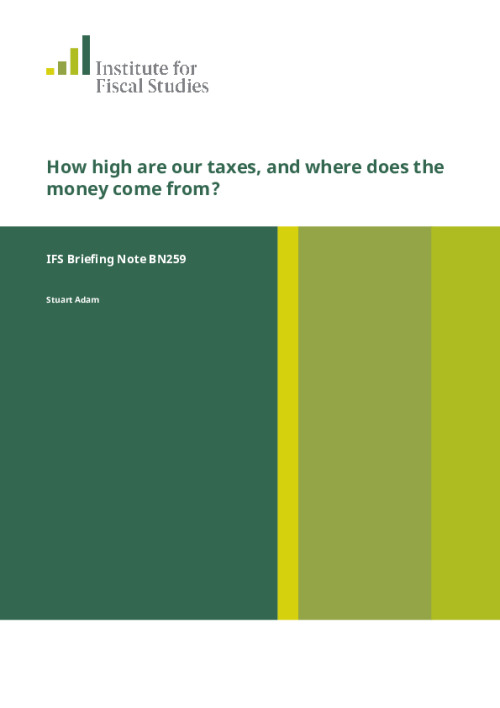Taxation is set to be a central policy battleground in this election, as in so many others. This Briefing Note provides some essential factual background to the parties’ claims and policies, placing the UK’s current tax burden in historical and international context and discussing where – and who – the revenue comes from.
Key findings
• Taxes in the UK are high by historical standards. At 34.4% of national income, the tax take is at its highest sustained level since the 1940s. Policy reforms since 2010 have increased tax revenue by about £20 billion overall – despite large giveaways increasing the income tax personal allowance, cutting the headline rate of corporation tax and freezing fuel duties. Tax-raising measures, including rises in VAT and National Insurance contribution (NIC) rates, exceed these giveaways overall in revenue terms.
• But UK taxes are not high by international standards. The UK tax take is near the average for developed countries, and lower than in most of Western Europe.
• Income tax, National Insurance contributions (NICs) and VAT provide almost two-thirds of tax revenue. Other countries typically raise more from social security contributions and less from property taxes. It is average earnings, rather than top earnings, that would be taxed markedly more if the UK adopted the tax system of a typical higher-tax country.
• The tax and benefit system is progressive overall. Before taxes and benefits, the highest-income fifth of individuals have an average household income that is 12 times as high as the poorest fifth. Adding all cash benefits and deducting the main direct personal taxes (income tax, employee and employer NICs and council tax) brings this figure down to 5. Benefits account for around 80% of this reduction, while direct taxes account for 20%. Indirect taxes (VAT and excise duties) take up a roughly constant fraction of household budgets across the income distribution, on average.
• The top 1% of the adult population now pays well over a third of all income tax. Only 58% of adults are liable for income tax at all. And the top 1% even of those who do pay income tax have seen their share of total income tax payments rise from 25% to 30% since 2010 as policy reforms, particularly under the coalition, increased income tax for the best off while reducing it for those on more typical incomes.









